


Next: About this document ...
Up: Can an eddy-resolving general
Previous: Summary
Figure 1:
Depth-integrated total transport of the model mean circulation. The
mean circulation is found over one year. The contour interval is 10 Sverdrups.
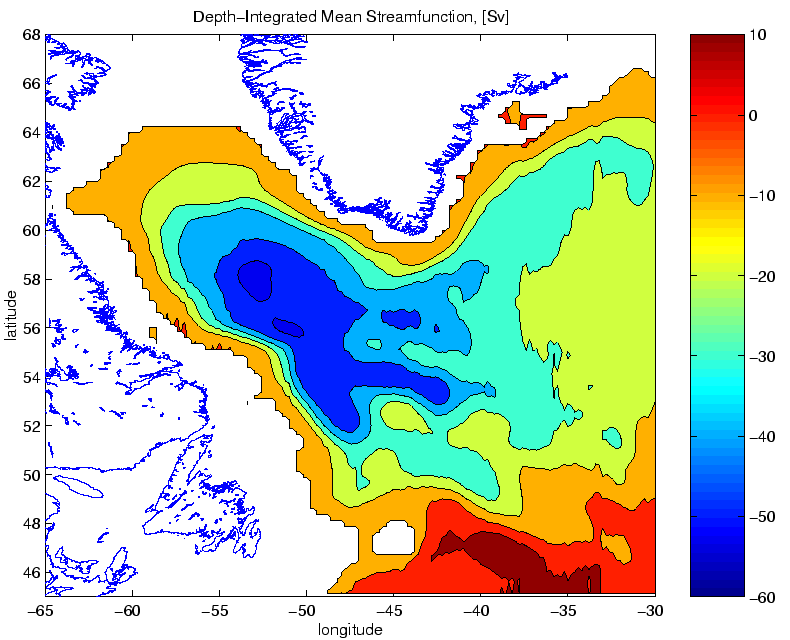 |
Figure 2:
Geostrophic height contours of the mean model circulation at 700
meters depth. The contour interval is 2 centimeters of geostrophic height.
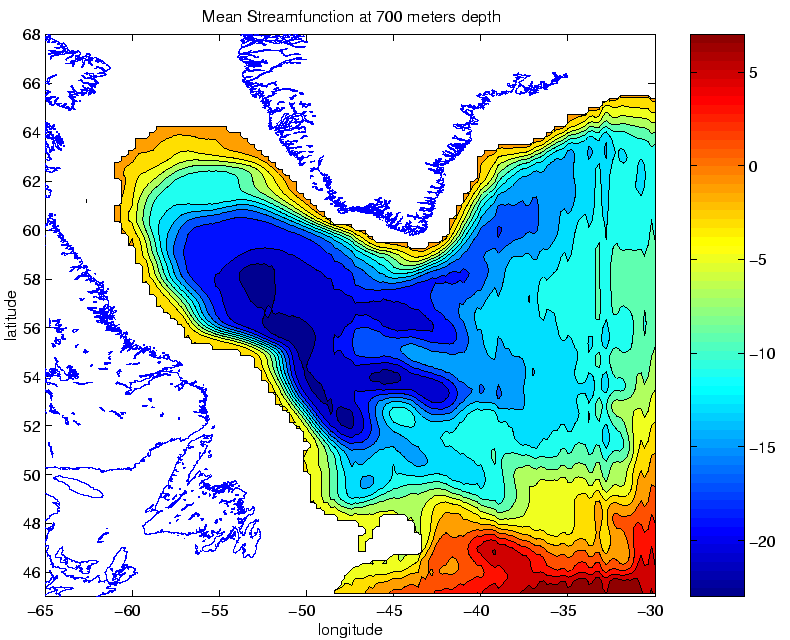 |
Figure 3:
Difference in model values between September 1997 and October 1996 as a
function of depth.
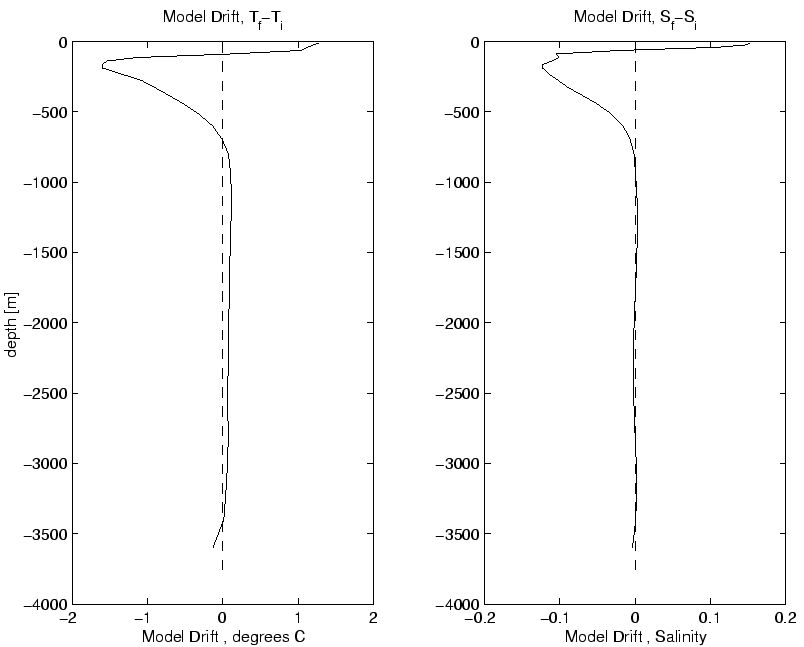 |
Figure 4:
10-day average model temperature profile for March 1-10, 1997, along
the AR7W WOCE cross-section. The model section includes 24 gridpoints. The observed data is on the following page.
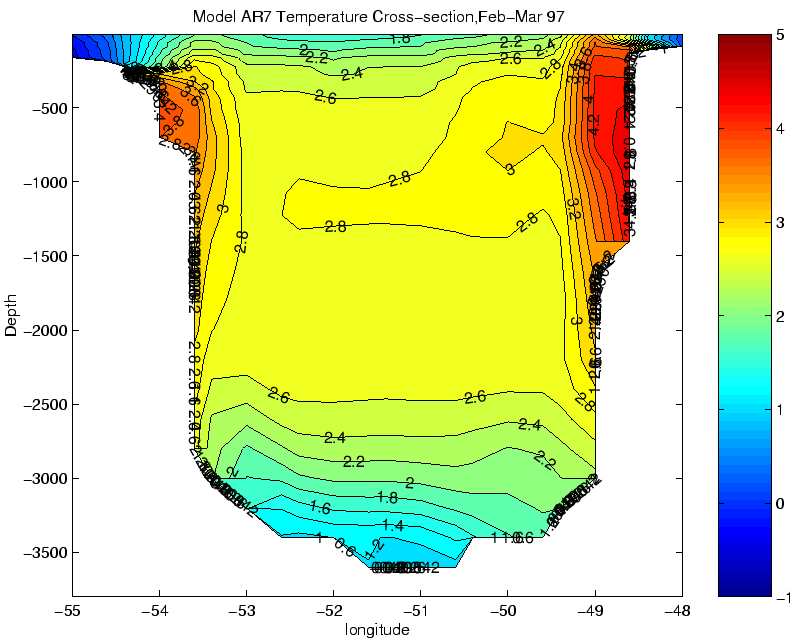 |
Figure 5:
Observed temperature profile for Feb 26-Mar 6, 1997, along the AR7W
WOCE cross-section (courtesy R. Pickart).
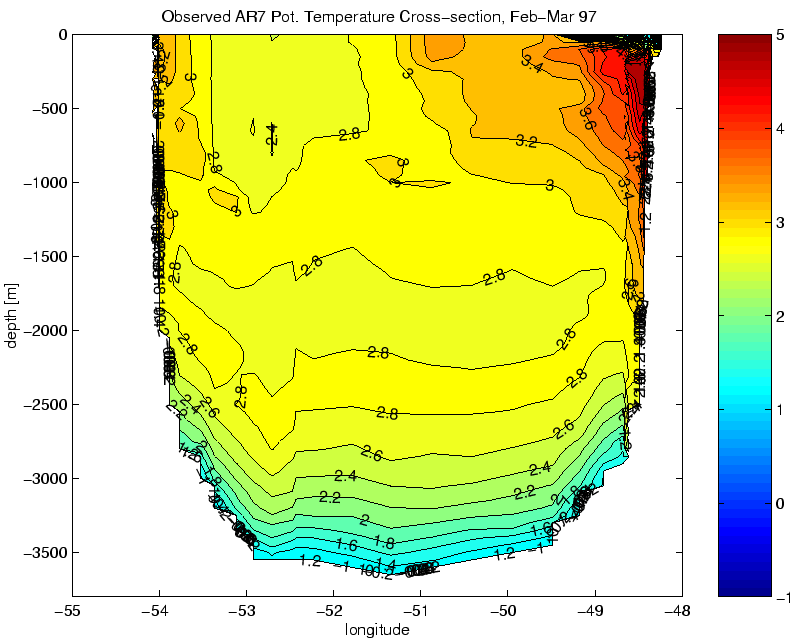 |
Figure 6:
10-day average model salinity profile for March 1-10, 1997, along
the AR7W WOCE cross-section. The observed data is on the following page.
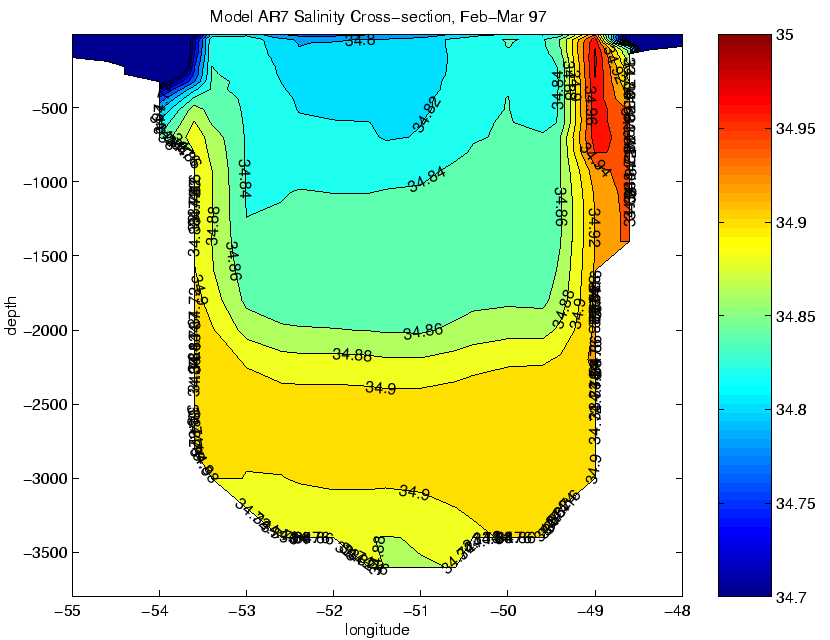 |
Figure 7:
Observed salinity profile for Feb 26-Mar 6, 1997, along the AR7W
WOCE cross-section (courtesy R. Pickart). The section is comprised of 37 stations.
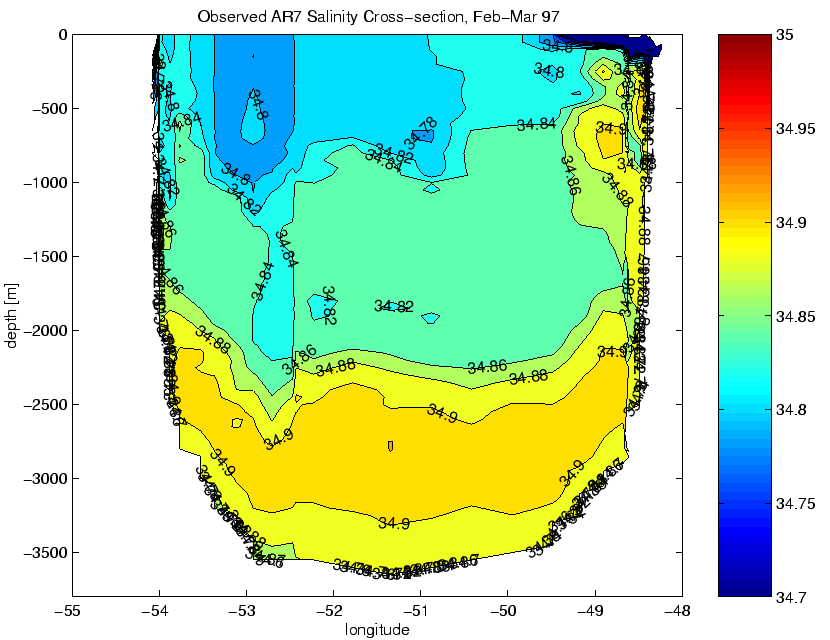 |
Figure 8:
10-day average model temperature profile for June 8-17, 1997, along
the AR7W WOCE cross-section. The observed data is on the following page.
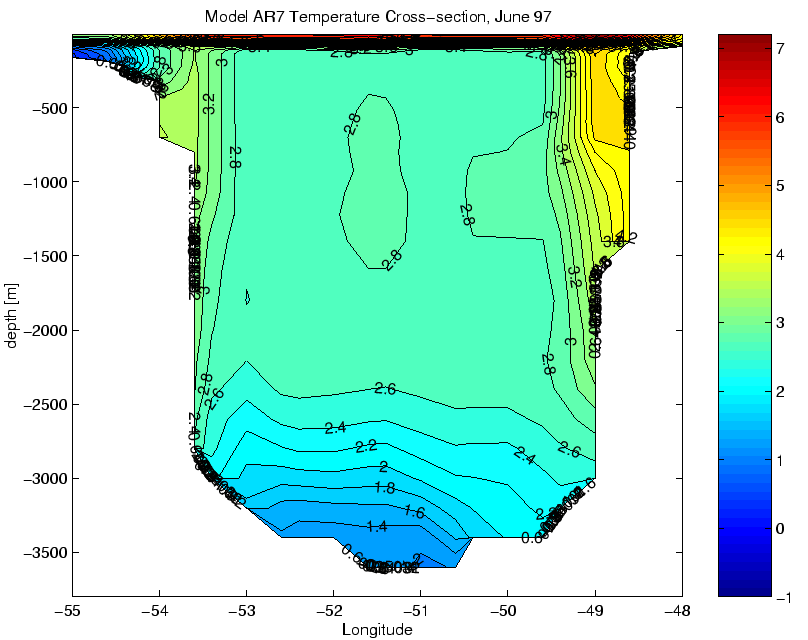 |
Figure 9:
Observed temperature profile for June 11-18, 1995, along the AR7W WOCE
cross-section (courtesy J. Lazier). The section is comprised of 24 stations.
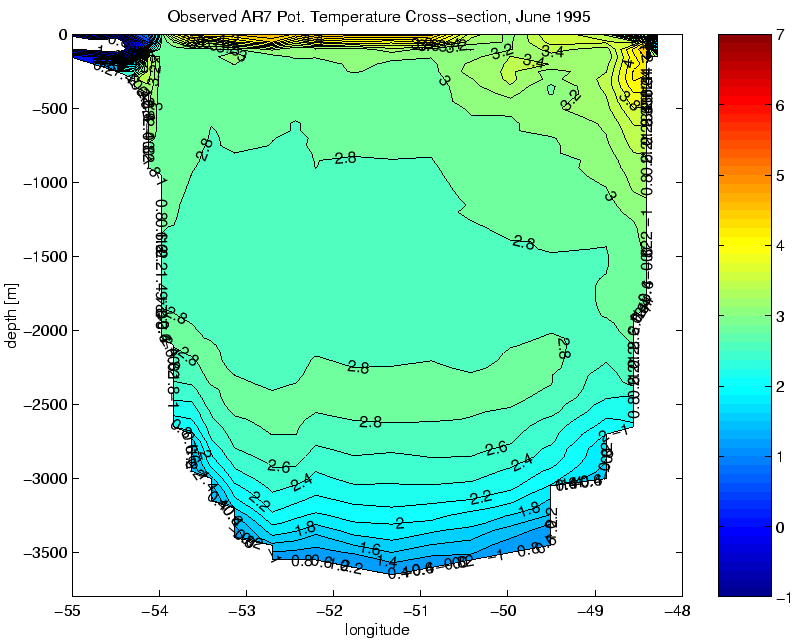 |
Figure 10:
10-day average model salinity profile for June 8-17, 1997, along
the AR7W WOCE cross-section. The observed data is on the following page.
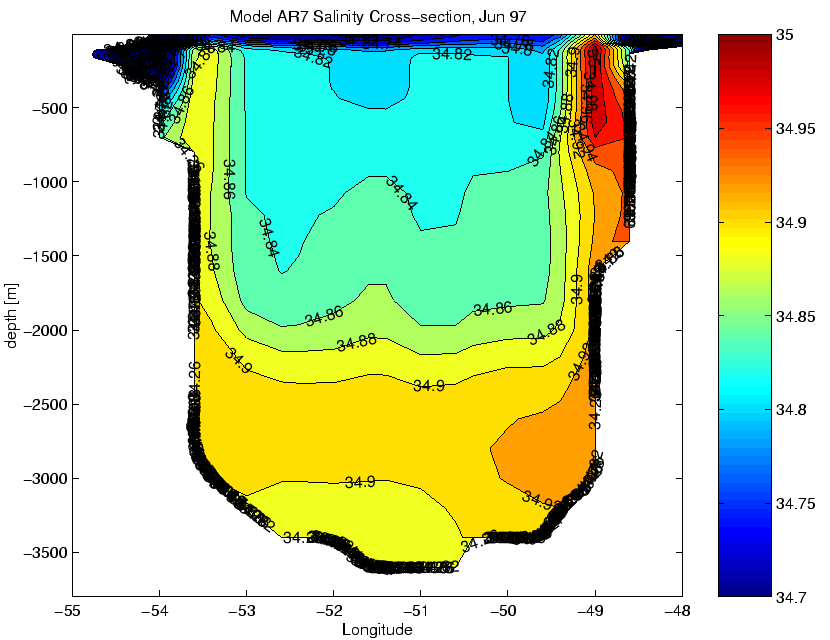 |
Figure 11:
Observed salinity profile for June 11-18, 1995, along the AR7W
WOCE cross-section (courtesy J. Lazier).
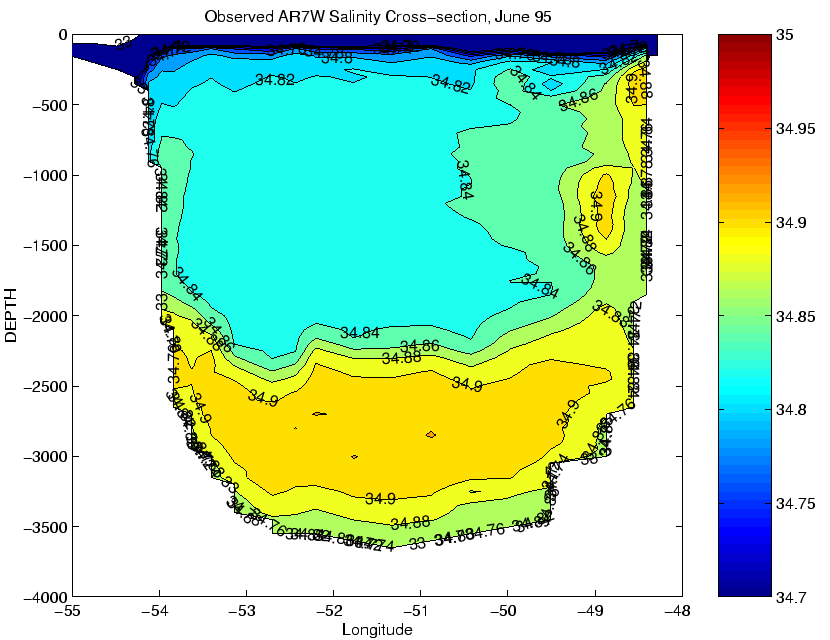 |
Figure 12:
Model temperature profile at Bravo mooring site (
 ) for 8 months of the winter convective season (Nov-May). The
observed profile was published by Lab Sea Group, 1998.
) for 8 months of the winter convective season (Nov-May). The
observed profile was published by Lab Sea Group, 1998.
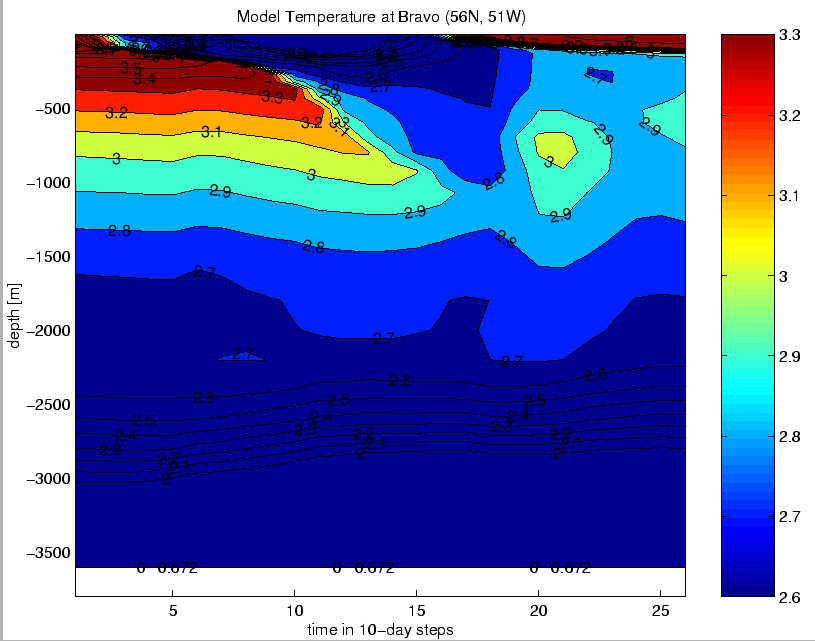 |
Figure 13:
One sample temperature profile from a PALACE float (solid) versus the GCM
(dashed) for four different times within the convective region.
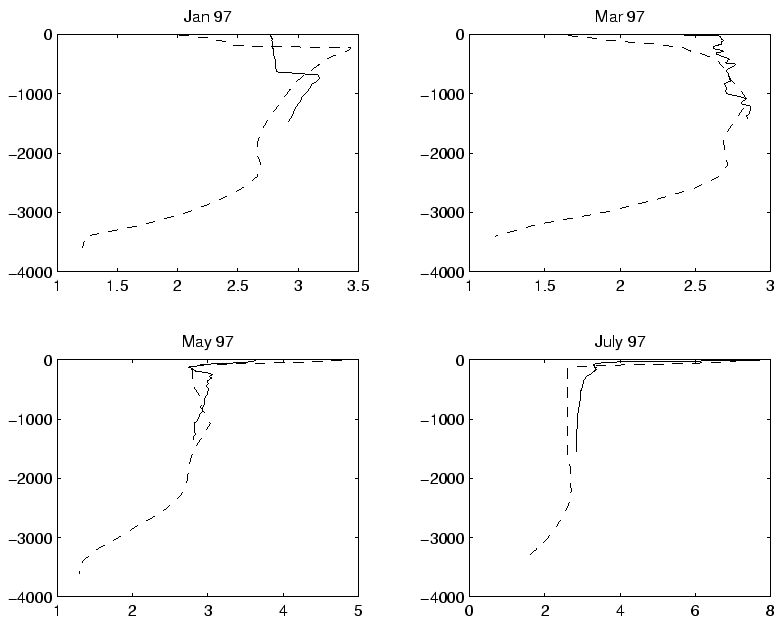 |
Figure 14:
One sample salinity profile from a PALACE float (solid) versus the GCM
(dashed) for four different times within the convective region.
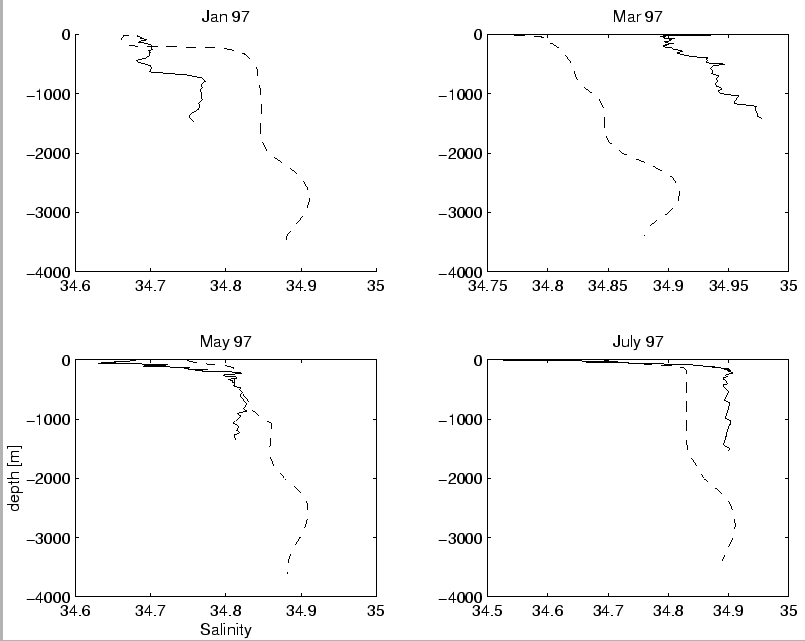 |
Figure 15:
Sea surface height variance computed from one year of 10-day average
model output. The maximum value is  . The Topex/Poseidon estimates of
SSH Variance are on the following page.
. The Topex/Poseidon estimates of
SSH Variance are on the following page.
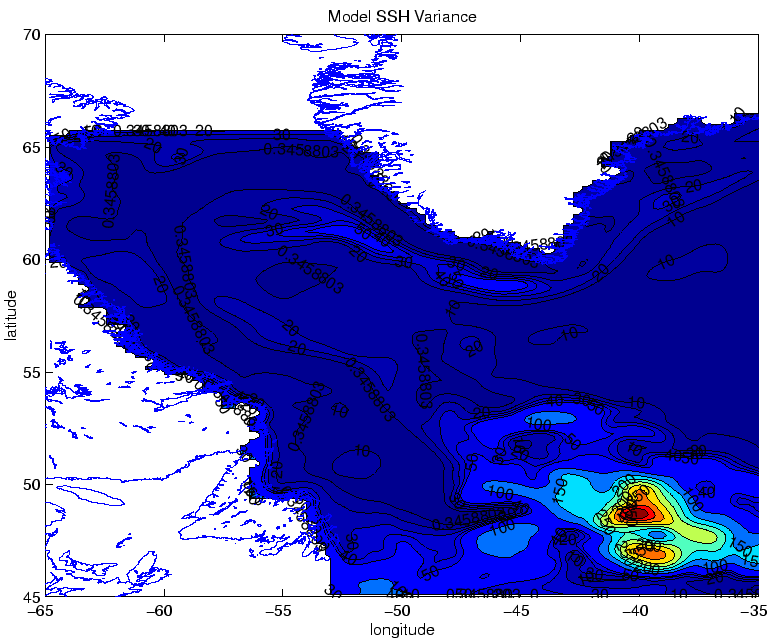 |
Figure 16:
Even tracks of SSH variance from one year of raw T/P data and one year
of model 10-day averages. Model data was interpolated to the satellite tracks
using a simple ``closest neighbor'' approach.
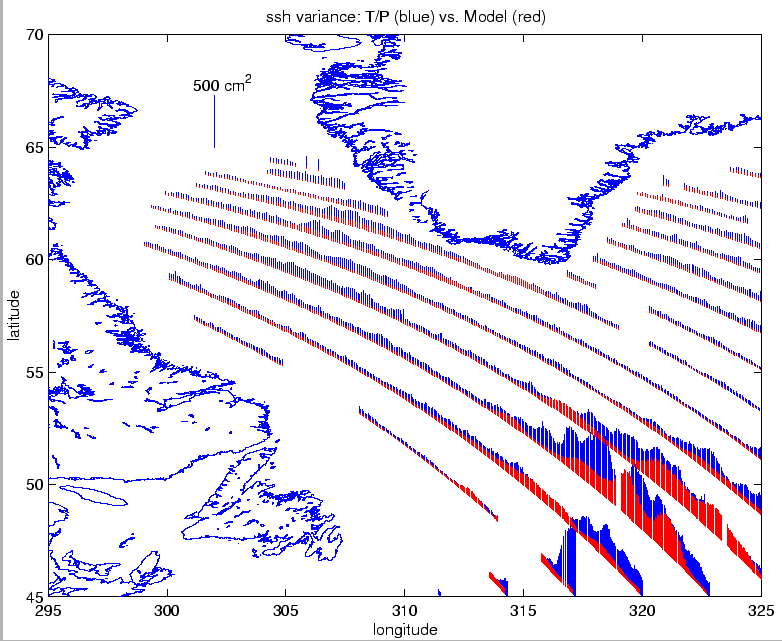 |
Figure 17:
Odd tracks of SSH variance. The Topex/Poseidon variance is larger than
the model variance in 95% of the points.
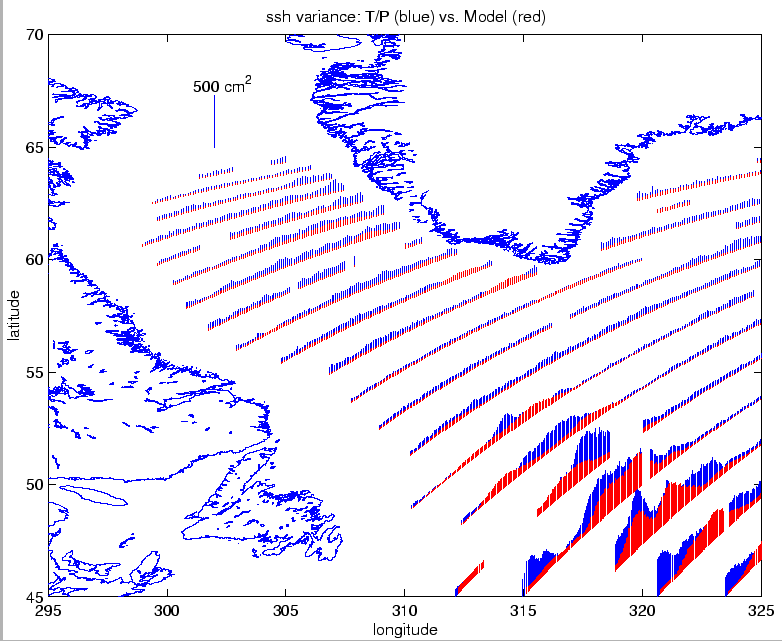 |
Figure 18:
Frequency spectra from 2 T/P points (solid, dotted) at a crossover
point for 6 years duration and frequecy spectrum from one model point (dashed)
of one year of one day average values. A 6-point Danielle window stabilized
the spectra and consequently shortened the bandwidth slightly.
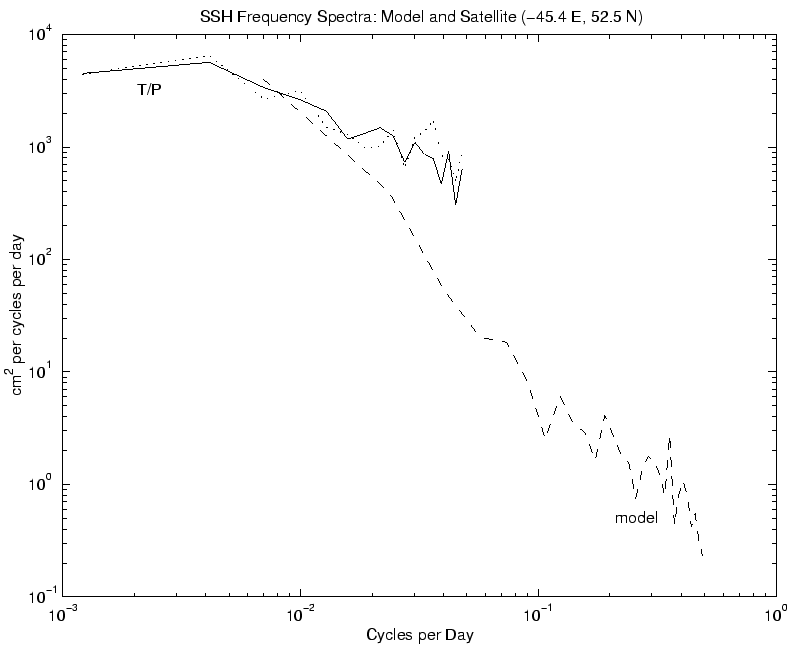 |
Figure 19:
Frequency spectra computed using the same process as the previous
figure. 2 T/P crossover points versus one model point (dashed).
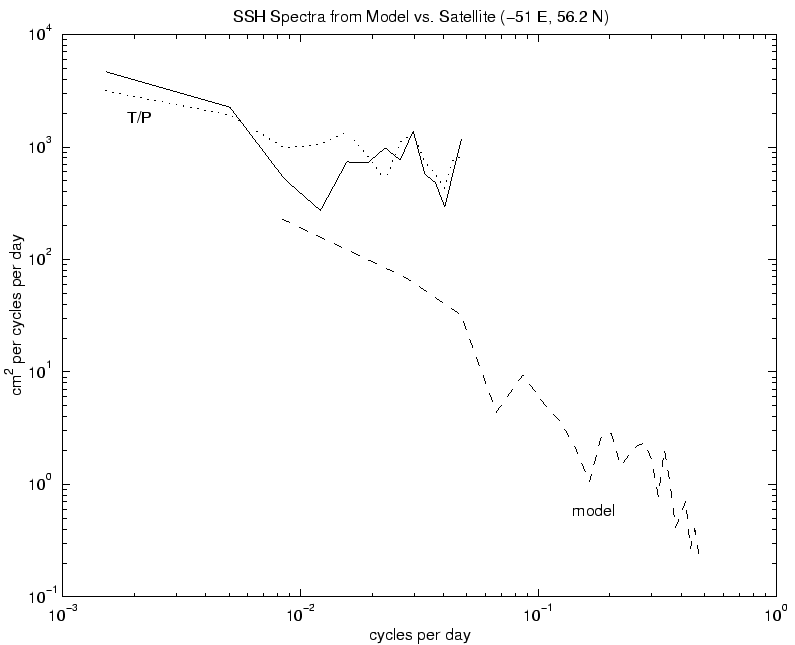 |
Figure 20:
Average surface geostrophic eddy kinetic energy for one year The energy was computed from the sea surface pressure field.
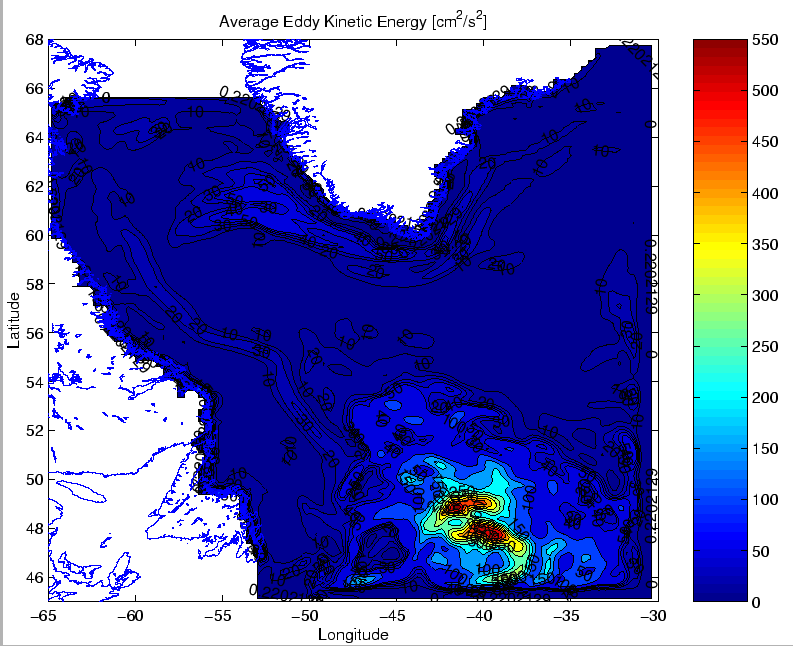 |
Figure 21:
Left Side: Observed  at 4 depths (circles) and the extrapolated
profile from a Gauss-Markov fit at site 91 (
at 4 depths (circles) and the extrapolated
profile from a Gauss-Markov fit at site 91 (
 ). Right
side: Model
). Right
side: Model  profile. Notice the change in scales of one or two orders
of magnitude.
profile. Notice the change in scales of one or two orders
of magnitude.
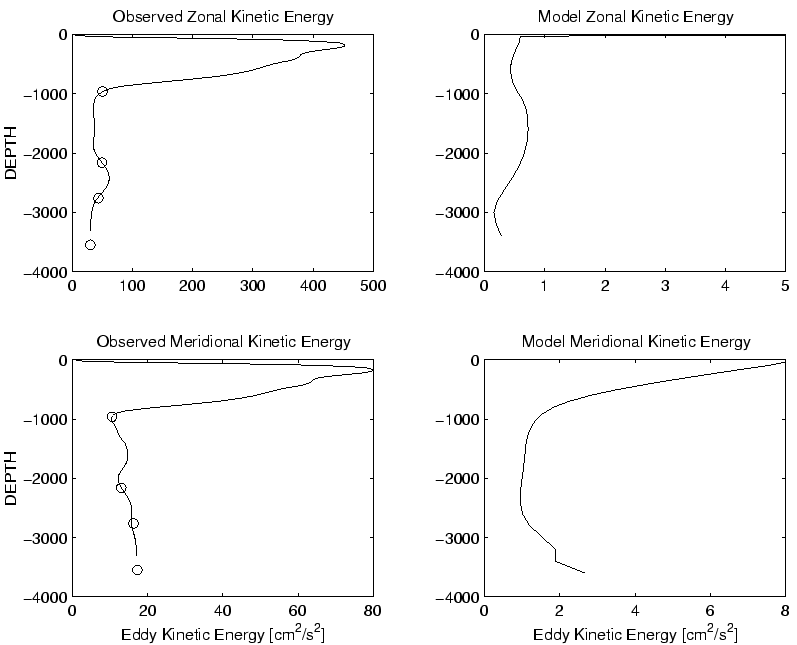 |
Figure 22:
Model velocity timeseries as a function of depth for one year from
10-day time averages at site 91 (
 ). Velocities are indicated by displacement from the dotted line. Maximum velocities are approximately 20 cm/s.
). Velocities are indicated by displacement from the dotted line. Maximum velocities are approximately 20 cm/s.
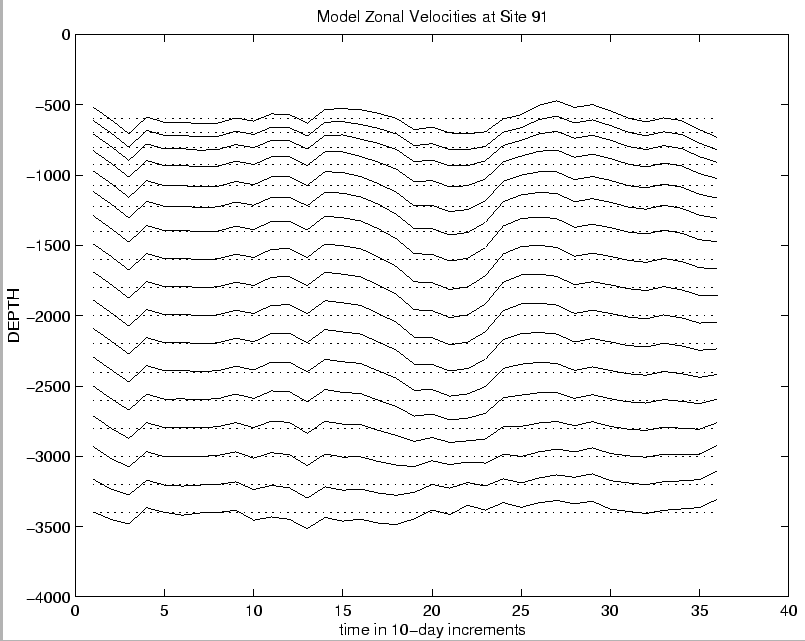 |
Figure 23:
A comparison between observed eddy kinetic energy at 3 depths
(circles), the extrapolated kinetic energy profile from a Gauss-Markov fit (dashed), and
the model kinetic energy profile (solid) at site 89 (
 ). An 'X' marks the surface intensified
energy of the uppermost model gridpoint.
). An 'X' marks the surface intensified
energy of the uppermost model gridpoint.
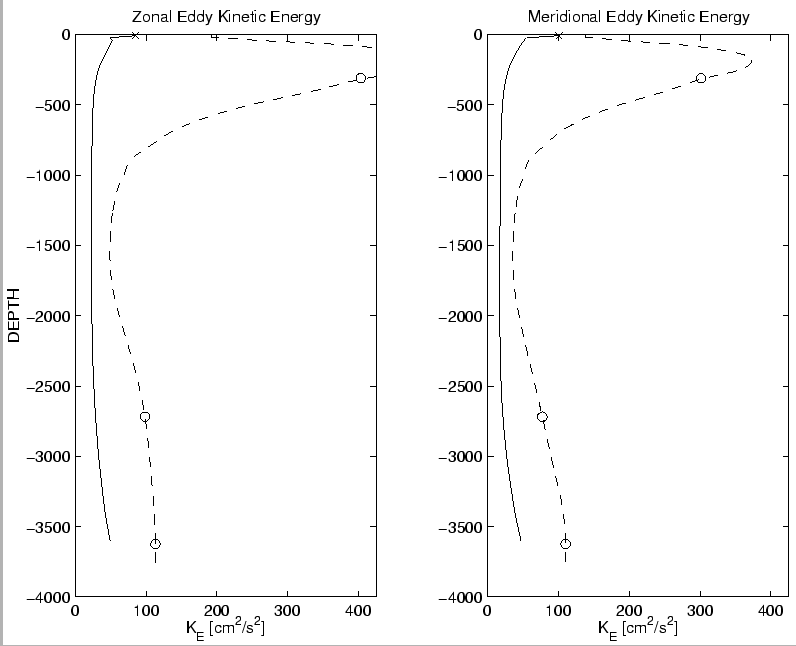 |
Figure 24:
The ratio of eddy kinetic energy at the ocean bottom to 1500
meters. Results are shown here for all depths greater than 1500 meters.
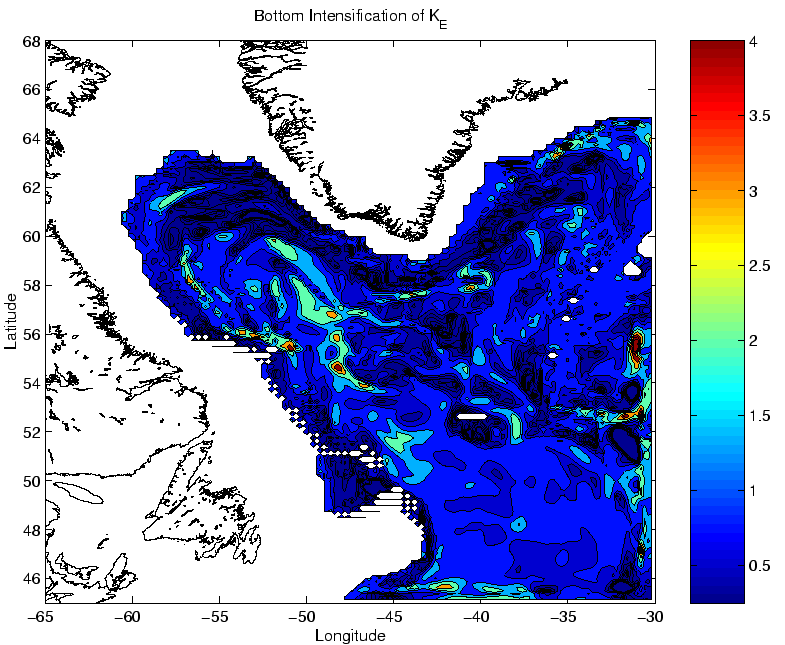 |



Next: About this document ...
Up: Can an eddy-resolving general
Previous: Summary
Jake Gebbie
2003-04-10
























